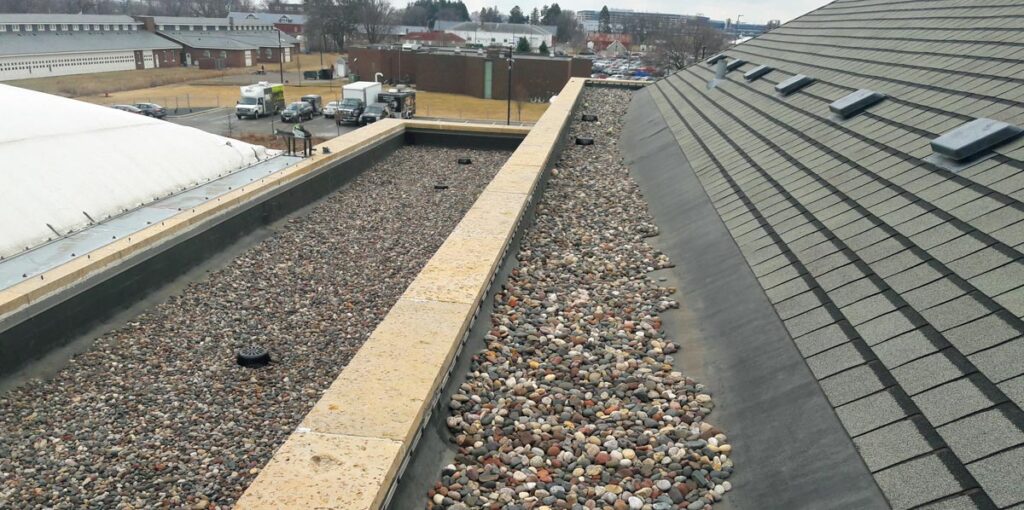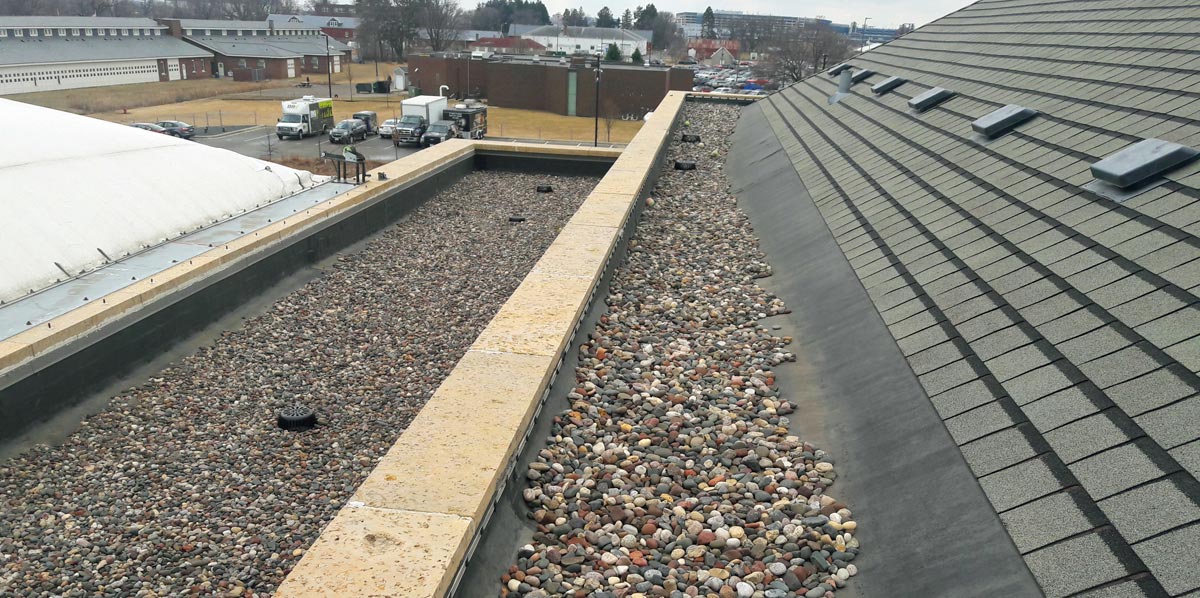How to Choose the Right Ballasted Roof System for Your Building
If you’re thinking about installing a ballasted roof system on your building, there are a few things you need to know to make sure you choose the right one. In this blog post, we’ll go over some of the key factors to consider when selecting a ballasted roof system, so you can be sure you’re making the best decision for your home or business. Keep reading to learn more!
What is a Ballasted Roof System?
A ballasted roof system is a type of low-slope roofing option that utilizes ballast to secure multiple layers of insulation and membrane. Ballast, usually composed of gravel, salt, or pavers, is spread across the surface of the insulation or membrane and keeps it secure in place. The ballast helps minimize scattering and displacement due to wind gusts and other environmental influences. This system provides both a practical and aesthetically pleasing solution that allows the roof to blend with the surrounding environment while providing reliable long-term protection from the elements.
The Benefits of a Ballasted Roof System
A ballasted roof system offers numerous advantages that make it an attractive roofing solution for many commercial and industrial facilities. One of the main benefits is its strength; with the weight of the ballast holding down the roof membrane, this construction method creates a far more reliable and secure system in comparison to other systems that rely on adhesives. Additionally, ballasted roofs are beneficial for their easy installation and flexibility. Since no large-scale removal or restoration is required when renovating an existing structure, businesses can avoid costly repairs and save money in the long run. Finally, since these types of roofs contain large amounts of gravel which reflects solar radiation and prevents heat transfer into buildings, they provide excellent insulation properties.
The Different Types of Ballasted Roof Systems Available
Ballasted roof systems are a long lasting and reliable solution for commercial flat roofs. Used extensively to provide protection from the elements, ballasted roofs come in a variety of components and design options. The most common type of system uses large stones or gravel that sits atop the waterproofing membrane, helping it to stay in place while allowing water to drain away. Other systems include lightweight fabricated ballast pavers or interlocking slabs that have weight retention properties, often designed with numerous colors and textures to enhance aesthetic value. Many designers opt for green roof systems as well, giving more options when it comes to protecting from the elements while also promoting sustainability and enabling vegetation growth. With these various styles, a ballasted roof system can be the perfect fit for any project.

How to Choose the Right Ballasted Roof System for your Building
Selecting the right ballasted roof system for a building is an important decision. Ballasted roof systems use gravel, stone, or other heavy materials to anchor the roof membrane and protect it from wind uplift. It’s important to determine the proper weight requirements to accommodate your unique climate conditions, as well as take into account the type of membrane being installed. Be sure to select high-quality materials that meet all safety standards and have been tested to withstand extreme weather conditions. Selecting a smaller and less expensive stone size can provide significant savings when designing a ballasted roof system; however, a lower stone density may compromise long-term performance of the roof. Carefully researching suppliers, references, and warranties is key in making an informed decision about the best ballasted roof system for your building.
Tips on Installation and Maintenance of a Ballasted Roof System
Installing a ballasted roof system can be a complicated process, but following the correct steps can help ensure it is prepared to stand up to the elements and last for years to come. Before beginning any work on a ballasted roof, inspect the roof substrate and make sure it is clean and level. After preparing the roof substrate, use high-quality roof membrane to create a watertight layer before installing the ballast. Next, carefully install ballast using machinery or manually and make sure it is evenly distributed throughout the roof area. Finally, regularly inspect and maintain your ballasted roof system by checking for leaks or damage that may have occurred from harsh weather conditions – this will help keep your system in optimal condition.
T. Reynolds Roofing
https://www.google.com/maps?cid=10623982110689552630
(385) 225-7633
https://www.treynoldsroofingllc.com/




